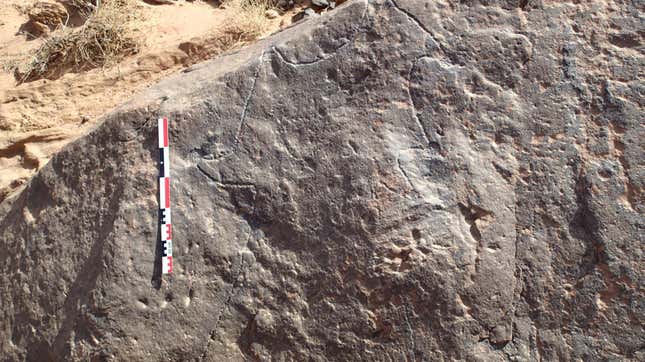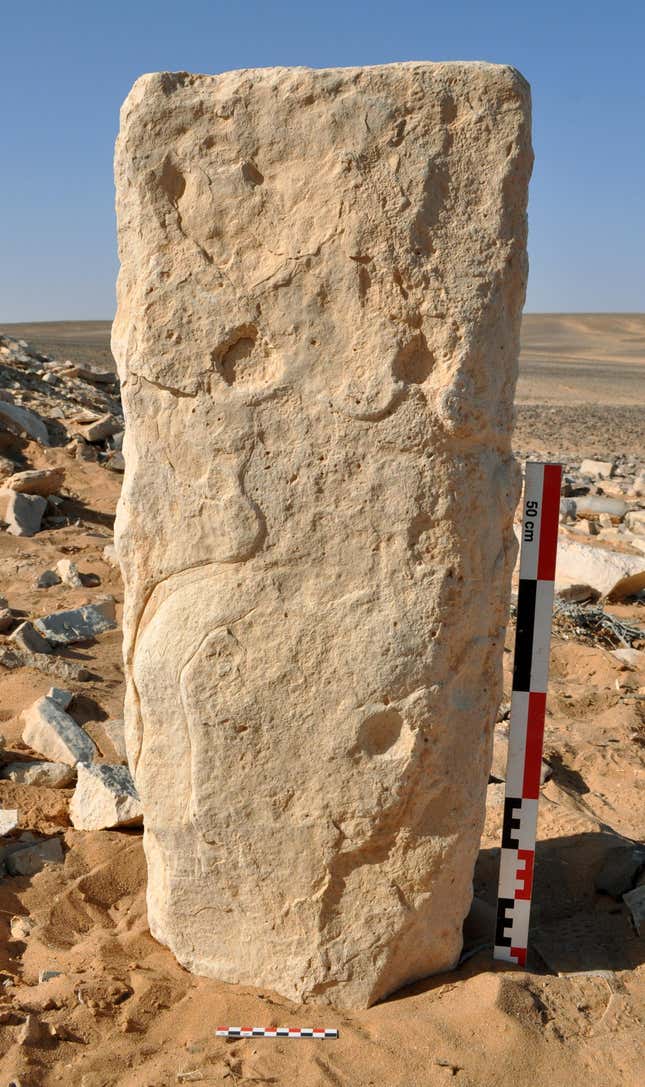
Ancient people living in what is today Saudi Arabia and Jordan carved to-scale plans for large animal traps, called kites, into rock. The scientists who analyzed the discoveries say the ability to transpose an aerial-view plan of this size to an actual structure points to a milestone in human intelligence and engineering.
Researchers from CNRS uncovered evidence of two aerial-view plans for ancient megastructures etched into rocks in Saudi Arabia and Jordan. Developing scale plans for massive structures is commonplace today, but for humans thousands of years ago, it was no small feat.
The plans are 267 kilometers apart and both date to between 7,000 and 8,000 years old. Each rock face contains scale models of desert kites—massive animal traps—transposed onto the two-dimensional surface of the rock. The etching in Jordan is 80 centimeters long and 32 centimeters wide, while the etching in Saudi Arabia is much larger, at 382 centimeters long and 235 centimeters wide. The team’s research is published today in PLOS ONE.

“We were immediately surprised by the similarity of the drawing with the hunting desert kite structures,” study author Olivier Barge wrote in an email to Gizmodo. “That’s how we realized that the engravings were actually accurate plans at scale.”
Desert kites are massive structures made of stone walls and pits that allowed humans to corral and trap animals. According to the researchers, desert kites were discovered as early as the 1920s, and thousands of them have been cataloged across the Middle East. Both stone etchings were found by study author Wael Abu-Azizeh and his colleagues in 2015, while the actual Saudi Arabian kite was discovered in 2014 and the Jordanian kite in 2013. Rémy Crassard, lead author on the manuscript, Barge, and Abu-Azizeh studied photos and created digital models of the etched stones and matched them to pre-existing kite structures via satellite imagery, which led them to nearby structures in Saudi Arabia and Jordan.
“The fact that it is only from looking at the satellite imagery that we were able to recognize that the features observed in the field were part of a desert kite layout is interesting in itself: it reminds how these large scale features are difficult to perceive from the ground, in view of their large size and their intricate topographical setting,” Barge said.
While these plans and kites are quite old, they’re not the oldest hunting structures ever found. Several years ago, archaeologists working near Mexico City discovered 15,000-year-old pits containing butchered mammoth bones, which they say were deliberately constructed mammoth traps.